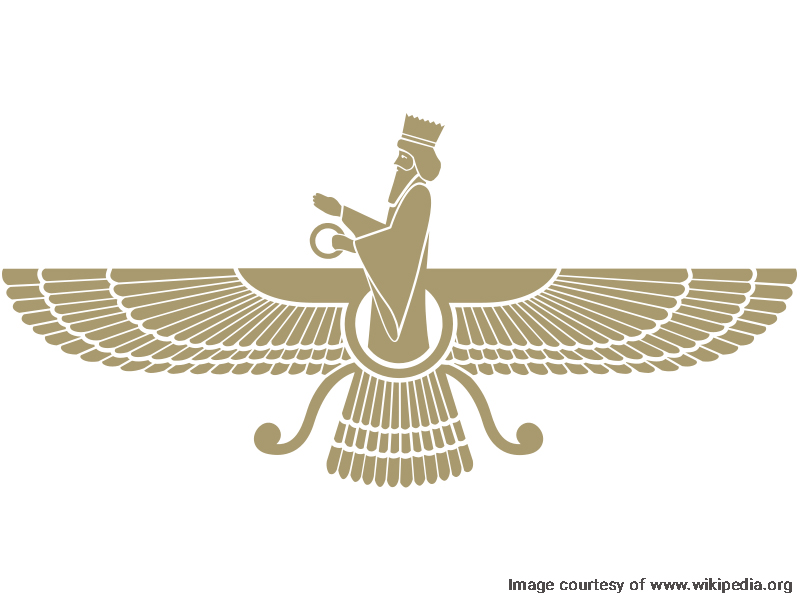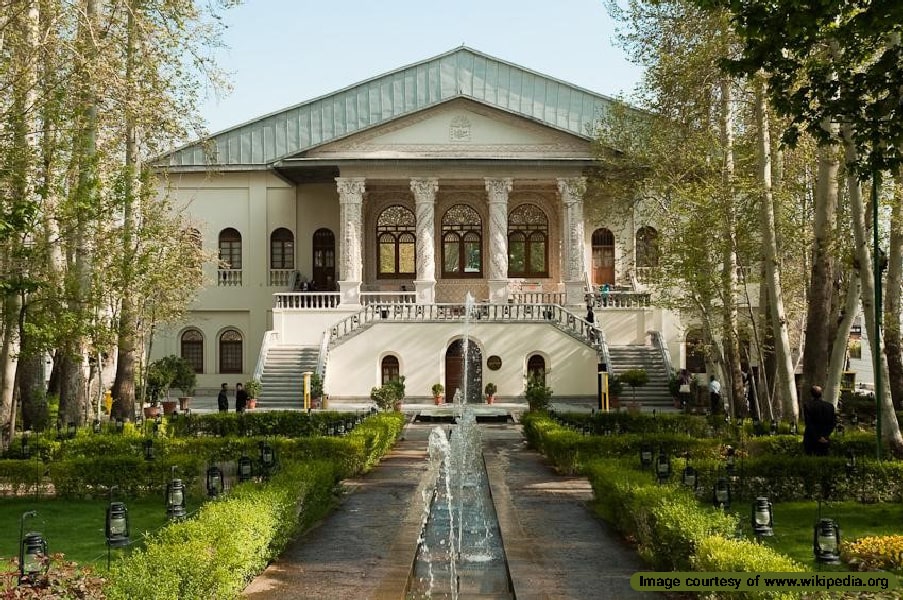
Ferdows Garden is a historical complex on Valiasr Street near Tajrish Square. It comprises a public park, the Ferdows Garden mansion, and the Cinema Museum of Iran. This complex was built during the Qajar era and features a green space and a corridor fountain. This historical heritage was added to the Iran National Heritage List in 1997. Ferdows Garden is one of Tehran’s urban architectural landmarks and among the most-visited Tehran Tehran tourist attractions.
History of Ferdows Garden Complex
Mohammad Shah, the third Qajar king ordered the construction of a residential castle in Shemiran. He died before the castle was completed and that building was never finished. However, other royal court members decided to build personal residences nearby. Hossein Ali Khan was the royal treasurer and chief coiner of the Qajar court who chose to construct a mansion on this site.
He constructed a two-story Qajar-style mansion on the north side of the current complex. The main mansion featured seven sections on the southern side. Each section was decorated with a pool and several fountains.
After the rise of Naser al-Din Shah, the mansion’s ownership was transferred to Hossein Ali Khan’s son, Doust Ali Khan. He named the mansion Ferdows and hired architects from Isfahan and Yazd to build a new mansion in the southern section. This mansion was called Reshk-e Behesht (Envy of Paradise). The staircase and parts of the mansion’s facade were covered with marble from Yazd. The interior was decorated with prominent gold sheets.
The next owner, Mohammad Doust Khan, mostly ignored the structure. The building deteriorated and the marble stones were removed and used in the Amirieh Mansion (Nizam School). The older mansion was demolished and the ownership of the building was transferred several times.
In 1900, during the reign of Mozaffar ad-Din Shah, the mansion was purchased by Mohammad Vali Khan Tonekaboni. He was the leader of the Constitutional Revolutionary Forces from Northern Iran. He renovated the defunct Qanat and built a portal with a magnificent facade at the Qanat’s entrance. More flat pools and fountains were also built in the complex.
The building was transferred to Toomanians, the first Iranian banking and exchange organization to cover Vali Khan’s debt. In turn, the commerce organization transferred the ownership to Reza Khan’s government instead of their outstanding debt.
In 1937, the education ministry purchased the building and converted it into the Shapur High School of Tajrish. In 1972, the complex was converted into a cultural center and exhibition location. After the 1979 revolution, the Ministry of Culture and Islamic Guidance acquired the complex.
Ferdows Garden Architecture
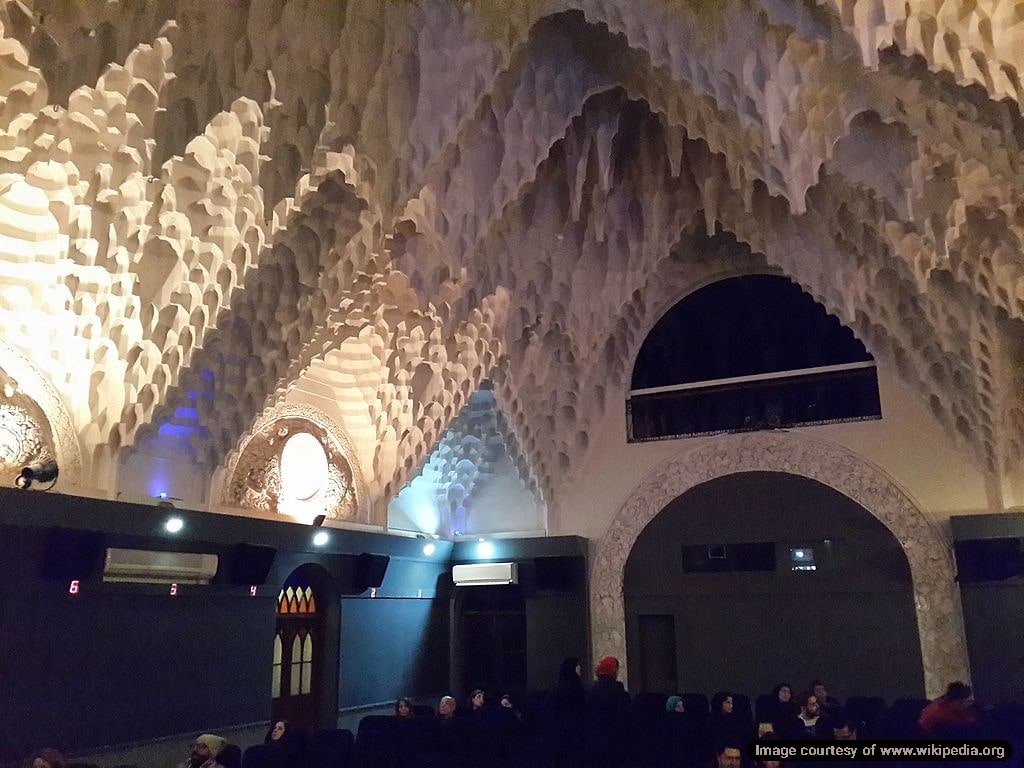
The Qajar style of architecture is obvious in this historical attraction. This style combines modern aesthetics with traditional Persian designs. The architecture of Ferdows Garden is inspired by the concept of Persian Garden. It is in line with the traditional Persian design element known as Chaharbagh (Four Gardens), which divides the area into several sections using water channels and stone pathways. Symmetry and the use of geometric patterns are two of the most important aspects of this style of architecture. This feature invokes a sense of harmony and tranquility in the visitor and brings nature into the heart of the city.
Architectural Features and Design Elements
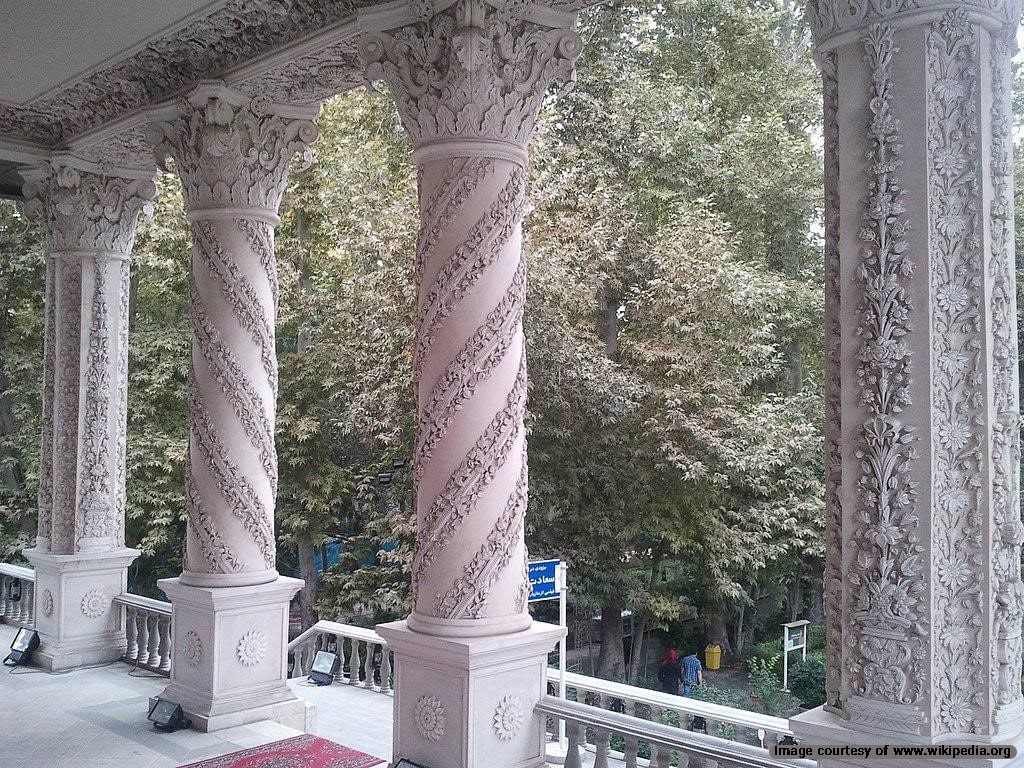
Pavilions and Arches: The garden includes charming pavilions adorned with beautifully crafted arches that showcase intricate plasterwork. This showcases the detailed architecture associated with the Qajar period. These structures provide shaded spots for relaxation and serve as focal points where guests can take in the garden’s beauty.
Columns and Pillars: The Mansion structure features elegant columns that embody the classic proportions and grandeur associated with Persian architecture, adding an atmosphere of royalty and sophistication.
Water Features: Water plays a crucial role in the Persian Garden, represented through canals, fountains, and reflective pools. These elements create a serene ambiance while representing an essential aspect of Persian gardens, the interplay between water and vegetation.
Landscape Design: Landscaping in Ferdows Garden adheres to the principles of Persian horticulture, where floral diversity is celebrated. A thoughtful arrangement of trees, herbs, and flowers not only enhances visual appeal but also invites a symphony of scents, further immersing visitors in this cultural haven.
Use of Traditional Materials: The architecture incorporates local materials like brick and stone, showcasing craftsmanship that has been passed down through generations.
Cultural Significance of Ferdows Garden
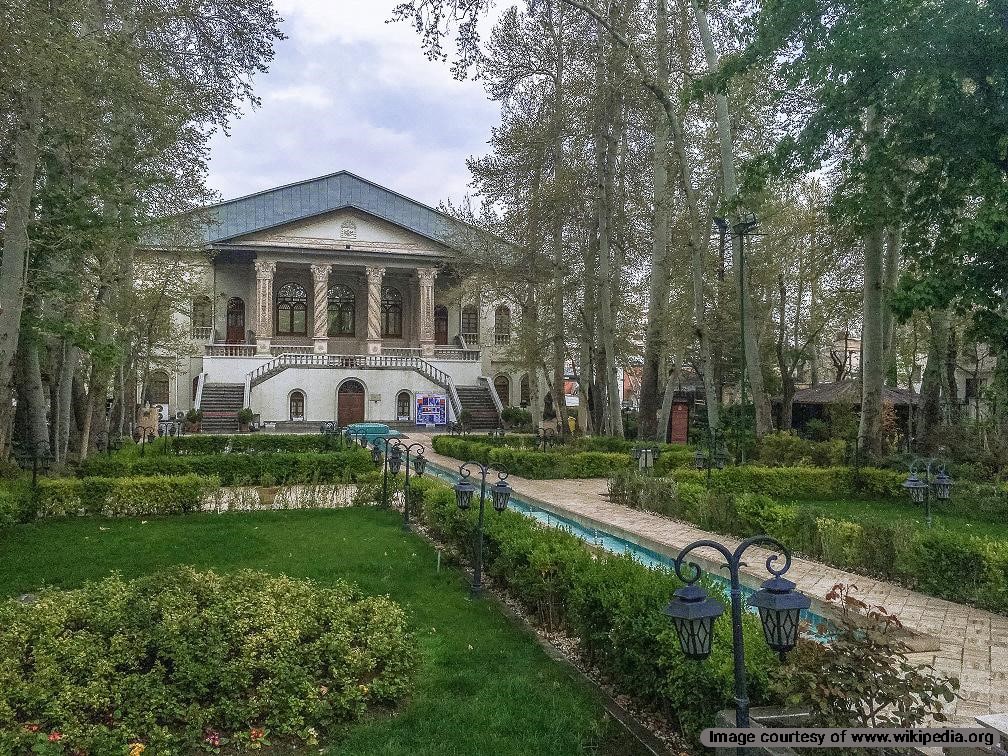
The Qajar architectural style at Ferdows Garden is not just a spectacle for the eyes. It tells the story of a civilization deeply attuned to the natural world. This blend of modernity and traditional elements embodies the arrival of a modern era while preserving traditional roots. Each element within the garden resonates with cultural value, showing the significance of nature in social and artistic expression.
The Qajar style of architecture in Ferdows Garden stands out as a masterful synthesis of traditional Persian aesthetics and contemporary influences. It reflects a thoughtful design philosophy where symmetry, geometric patterns, and the harmonious interplay of natural and built environments.
The various elements come together to create a sanctuary that is truly a celebration of beauty and culture. Visitors are invited not only to witness this architectural marvel but also to experience a sense of peace and connection to Iran’s rich historical tapestry.
Cinema Museum of Iran
The Cinema Museum of Iran, situated within the picturesque Ferdows Garden, is a vibrant testament to the country’s rich cinematic history and cultural heritage. Established to preserve and celebrate the art of film, the museum serves as both an educational resource and a cultural hub for cinema enthusiasts.
Historical Background
Founded in 1999, the Cinema Museum of Iran is located in a structure that once served as a historic cinema house. The museum’s establishment marked a significant step in acknowledging the evolution of Iranian cinema and its influential figures over the decades. It provides visitors with an insightful journey through the development of film in Iran, from its early beginnings to contemporary productions.
Architecture of Cinema Museum
The museum is thoughtfully divided into thematic zones, each showcasing different aspects of Iranian cinema—historical, cultural, and artistic. This organizational structure enhances the visitor experience by guiding them through a narrative that unfolds over time.
The interior is designed with spacious galleries that allow for flexible exhibit arrangements. This openness encourages exploration and interaction, inviting visitors to engage with the various installations and displays.
While maintaining its historical roots, the design masterfully integrates modern architectural styles. Large glass panels and open spaces create a sense of transparency and connection with the surrounding garden, allowing natural light to flood the interiors. This modern touch symbolizes the evolution of Iranian cinema into a contemporary global context.
Integration with Ferdows Garden
The museum’s architecture seamlessly connects with the lush landscapes of Ferdows Garden. Outdoor seating areas and pathways encourage visitors to enjoy nature while reflecting on the cinematic journey they have experienced inside. This integration underscores the importance of nature in Persian culture and art, enhancing the overall ambiance.
Environmental Considerations
The museum takes into account modern sustainability practices. Features such as energy-efficient lighting, rainwater harvesting systems, and materials sourced with minimal environmental impact reflect a commitment to ecological responsibility. This focus on sustainability complements the museum’s role as a cultural institution dedicated to the future of Iranian cinema.
Exhibits and Collections
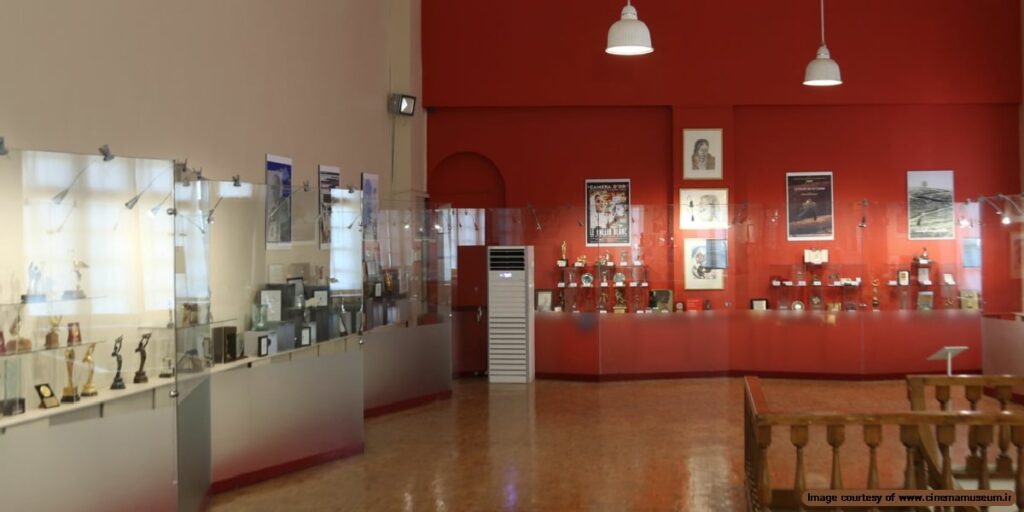
The museum boasts a diverse range of exhibits that celebrate important milestones in Iranian cinema. These include:
Film Artifacts: Visitors can explore an extensive collection of archival materials, including posters, scripts, cameras, and costumes. These artifacts offer a glimpse into the creative processes and artistic expressions that have shaped Iranian film.
Interactive Displays: Engaging exhibits allow visitors to immerse themselves in the cinematic experience, featuring multimedia installations that highlight key films, genres, and directors. Interactive screens provide information about notable achievements in Iranian cinema.
Tributes to Icons: The museum pays homage to celebrated Iranian filmmakers and actors who have made significant contributions to the industry’s development. Dedicated sections showcase their works, biographies, and the lasting impact they have had on both national and international cinema.
Screening Rooms: The museum includes intimate screening spaces where classic Iranian films and contemporary works are showcased. These screenings not only entertain but also serve as educational opportunities for visitors to understand the evolution of storytelling through film.
Cultural Impact
The Cinema Museum of Iran plays an essential role in fostering appreciation for Iran’s unique cinematic language and themes. It highlights the cross-cultural influences, social narratives, and artistic movements present in Iranian films. This cultural emphasis fosters dialogue around identity, history, and the evolving societal landscape of Iran.
Visit Ferdows Garden and Cinema Museum of Iran
The Ferdows Garden is a masterpiece of Qajar architecture that brings tranquility to the heart of busy Tehran. If you want to learn more about Iranian architecture, cinema, and film history, visiting this complex is hitting two birds with one stone.
The Cinema Museum is committed to educational outreach, providing workshops, lectures, and film screenings aimed at encouraging both critical appreciation and study of cinema among students and the general public. These initiatives help cultivate a new generation of filmmakers, critics, and enthusiasts, ensuring the continuity of Iran’s cinematic legacy.
Where is the Ferdows Garden Complex and Cinema Music of Iran?
Ferdows Garden, also known as Ferdows Park, is located in Tehran, Iran. This historic garden is situated in the northern part of the city and is part of the larger Ferdows Cultural-Historical Complex. From Tehran City Center, Head north on Valiasr Street, which is one of the main thoroughfares. Continue straight until you reach the intersection with Tajrish Square. Turn right at the square onto Shahid Bahonar Street (also known as Farmanieh Street). Proceed north for a few kilometers, and you will see the entrance to Ferdows Garden on your left.
Frequently Asked Questions About Ferdows Garden
If you have any other questions about Ferdows Garden or the Cinema Museum of Iran, please let us know in the comments. We will respond as soon as possible.
What is Ferdows Garden?
Ferdows Garden is a historic public garden located in Tehran, Iran. It is known for its beautiful landscapes, rich flora, and cultural significance, serving as a serene retreat amid the bustling city.
What are the main attractions in Ferdows Garden?
The main attractions include the Cinema Museum of Iran, several historical buildings, vibrant flower beds, and shaded pathways. The garden also features fountains and ornamental ponds, creating a tranquil atmosphere.
Is there an entrance fee to Ferdows Garden?
Yes, you must pay an entrance fee to the complex. There is a stand at the entrance that provides tickets for entry and a dedicated ticket to the Cinema Museum. You can also use the automated ticket service to gain access.
Are there any facilities available for visitors?
Yes, Ferdows Garden offers several amenities, including benches for resting, walking paths, and sometimes food stalls or cafes. Public restrooms are also available.
Are there guided tours available?
While the garden itself does not typically offer guided tours, the Cinema Museum within it may provide educational programs and tours. It’s best to check in advance for specific offerings.
Is Ferdows Garden accessible for individuals with disabilities?
The park strives to be accessible, with pathways designed for easier movement. However, the level of accessibility may vary, so it’s advisable to check before visiting if specific accommodations are needed.







